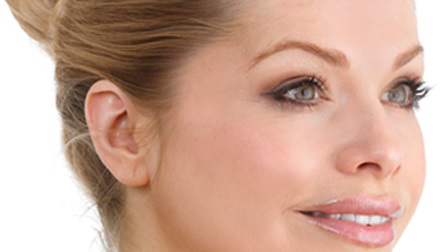Top Stories

Fat Transfer: An Increasing Trend in Facelifting and Body Contouring Surgery
By Paul Tulley
The transfer of fat from one area of the body to another has become an increasingly important part of cosmetic surgery. Fat transfer allows the replacement of volume that may have been lost with ageing, the improvement of tissue contours and also an increase in the quality of the overlying skin to enhance the results of rejuvenation surgery.Its use was first pioneered in facial rejuvenation and it has now become a common part of facelifting procedures. Standard facelift techniques usually encompass a resuspension of the deeper SMAS layer of the face (a layer of fibrous and fatty tissue between the skin and underlying bone), together with a redraping of the overlying skin and trimming of the excess. These techniques resuspend and reposition facial volume into the cheeks, improving cheek contour whilst producing a slimmer lower face, the elimination of jowels and a cleaner, better defined jawline and neck angle.
The addition of fat grafting, the fat usually taken from the abdomen, adds additional volume to the cheeks, enhancing their contour and youthful appearance. This significantly improves the rejuvenation process by replacing the volume loss that is associated with ageing. It also improves skin tone and dermal thickness and softens the overall appearance of the face, providing further rejuvenation benefits and increasing facial attractiveness. Fat can also be added to other areas around the face to aid this process such as the temples, brow, jawline and lips.
Fat grafting is also used extensively in other parts of the body to improve body contour. This is commonly undertaken for moderate breast augmentation and to improve buttock shape and volume. With ageing fat commonly accumulates in the flanks (waist), the front of the abdomen and thighs in females, however the buttocks can commonly experience an element of deflation, losing their contour and definition. Some patients may have always had relatively flat buttocks and would like them augmenting. Previously this was more commonly undertaken using buttock implants, however this procedure is associated with significant risks and more recently has been replaced by fat transfer in the majority of patients who have sufficient spare fat.
The fat is most commonly harvested from the flanks and stomach, creating a more defined waist, then reinjected into the buttocks to create a fuller, rounder contour. The contrast between the narrowed waist and the fuller buttocks creates a more attractive feminine contour and appearance in the waist and buttock area. This can be combined with thigh liposuction if needed to produce an enhanced body silhouette across the whole of the abdomen, waist, buttock and thigh areas.
The transferred fat is reinjected as small droplets in multiple directions and at multiple levels to build up and produce the optimal contour and ensure maximal fat survival. Fat survival varies from patient to patient but depends on age, general health, lack of smoking and optimal surgical technique. This usually ranges from 55 to 90% - with younger, fitter, non-smoking patients having a higher chance of good fat survival. If necessary the procedure can be repeated to add additional volume as required.
Buttock fat transfer avoids the problems associated with buttock implants, such as infection, displacement, extrusion and chronic pain and discomfort, whilst providing a more optimal and natural result.
In summary, fat transfer is an important advance in cosmetic surgery for the face, breast and body. It allows the replacement of volume that commonly is lost as part of the ageing process in the face. This allows a more comprehensive rejuvenation of the face during facelifting procedures, optimising the cheek and facial aesthetic contours, improving skin tone and thickness and softening the overall appearance of the face.
In the buttock, fat transfer, together with liposuction of the stomach, flanks and thighs, provides a reliable method to augment buttock volume and optimise buttock contour whilst avoiding the complications of implants. It effectively optimises the body silhouette across the stomach, flank, buttock and thigh regions.
Mr Paul Tulley BSc MB BS MD FRCS(Plas)is a consultant plastic, reconstructive and cosmetic surgeon specialising in all aspects of cosmetic surgery, surgery for facial palsy, breast reconstruction, skin cancer and scar revision.
Paul graduated from Charing Cross and Westminster Medical School, London in 1993 and completed specialist training in plastic surgery at a number of London teaching hospitals. He subsequently undertook further specialist training in microsurgery in Taipei, Taiwan and Toronto.
Paul gained additional experience in cosmetic surgery during a cosmetic fellowship at the Wellington Hospital, London as well as further training in the United States. He has trained with many of the leading cosmetic surgeons in the United Kingdom and the USA.
Paul's main areas of interest are surgery for facial palsy, breast reconstruction and all areas of cosmetic surgery for female and male patients. These include facial rejuvenation (face and brow lifting, blepharoplasty), rhinoplasty, cosmetic breast surgery, liposuction and body contouring procedures and non-surgical treatments.
152 Harley St
London
W1G 7LH
The Lister Hospital
Chelsea Bridge Rd
London
SW1W 8RH
The Runnymede Hospital
Guildford Rd
Chertsey
Surrey
KT16 0RQ
Practice Manager: 0207 183 1559
www.paultulley.com



Comments